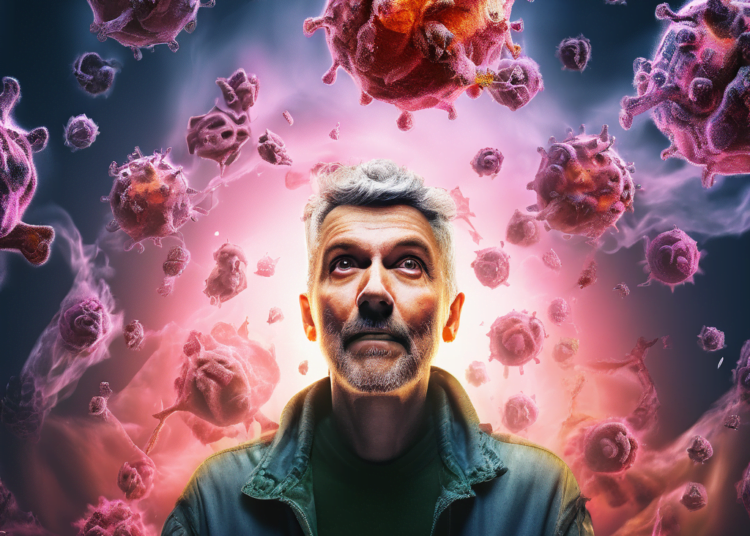In recent years, there has been a concerning trend of young people getting cancer. While cancer has historically been associated with older age groups, there has been a significant rise in cancer incidence among adolescents and young adults. This article explores the reasons behind this increase and provides insights based on statistical data on cancer in youth.
Key Takeaways:
- Youth cancer rates have been on the rise, highlighting the need for further investigation into the causes and risk factors affecting young adults.
- Understanding the prevalence and types of cancer in this population can help identify areas for improved prevention, early detection, and treatment options.
- Environmental and genetic factors play significant roles in contributing to the incidence of cancer in young people.
- Psychological and social factors impact young cancer patients’ overall well-being and prognosis, emphasizing the importance of support systems.
- Advancements in treatment options and the availability of support resources are crucial for addressing the unique needs of young cancer patients.
Rising Incidence of Cancer in Young Adults
Over the past few decades, there has been a significant rise in the incidence of cancer among young adults. This trend is concerning, as it highlights the increasing vulnerability of this age group to this life-altering disease. To better understand the reasons behind this surge, it is essential to explore both the environmental and genetic causes of cancer in adolescents.
Environmental Causes of Cancer in Adolescents
Environmental factors play a crucial role in cancer development in the younger age groups. Exposure to various carcinogens, such as tobacco smoke, air pollution, and hazardous chemicals, can significantly increase the risk of cancer among adolescents. When encountered during the critical stages of growth and development, these substances can have lasting effects on the body, leading to the initiation and progression of cancer cells.
Furthermore, lifestyle choices also contribute to the rising cancer prevalence in younger age groups. Sedentary habits, unhealthy diets, and excessive alcohol consumption are known risk factors for cancer development. The adoption of these behaviors among young adults has played a role in the increase in cancer cases in this population.
Genetic Causes of Cancer in Adolescents
Genetic factors also play a significant role in the rising incidence of cancer among young adults. Inherited mutations in specific genes, such as BRCA1 and BRCA2, are associated with an increased risk of breast, ovarian, and other types of cancer. These genetic variations can be passed down from parent to child and contribute to the development of cancer at a younger age.
Additionally, gene variants that affect the body’s ability to repair damaged DNA can also increase the susceptibility to cancer in adolescents. These genetic predispositions, combined with environmental factors, can act synergistically and further elevate the risk of cancer in young adults.
Exploring the Impact
The interplay between environmental and genetic causes of cancer in adolescents is complex and multifaceted. Understanding the impact of these factors on the youth population is crucial for devising effective prevention strategies, implementing targeted screening programs, and developing personalized treatment approaches.
By unraveling the underlying causes of cancer in young adults, researchers and healthcare professionals can work towards early detection and intervention and ensure better outcomes for this vulnerable population.
Trends of Cancer Incidence in Young People
In this section, we will analyze cancer incidence trends in young people, focusing on specific types of cancers and their prevalence among different age groups. Understanding these trends is crucial in identifying the factors contributing to the rising rates of cancer among the youth population.
Recent studies have shown concerning increases in cancer incidence among young people, prompting researchers to investigate the underlying causes and risk factors. By examining these trends, we can gain valuable insights into the impacts of lifestyle changes, environmental exposures, and genetic predispositions on cancer development in the younger age groups.
It is important to note that certain types of cancers exhibit different trends in different age groups. For example, while melanoma may be more prevalent in adolescents and young adults, leukemia or brain tumors may be more commonly diagnosed in children. Understanding these variations can help healthcare professionals tailor prevention strategies and screening protocols accordingly.
The following table presents an overview of the trends in cancer incidence among young people, highlighting the top five most frequently diagnosed cancers in different age groups:
| Age Group | Most Commonly Diagnosed Cancers | Percentage of Total Cancer Incidence |
|---|---|---|
| 0-14 years | Leukemia, Brain tumors, Neuroblastoma, Wilms tumor, Lymphomas | 30% |
| 15-19 years | Leukemia, Brain tumors, Lymphomas, Sarcomas, Germ cell tumors | 25% |
| 20-24 years | Lymphomas, Testicular cancer, Melanoma, Thyroid cancer, Leukemia | 20% |
| 25-29 years | Testicular cancer, Lymphomas, Melanoma, Thyroid cancer, Breast cancer | 18% |
| 30-39 years | Breast cancer, Melanoma, Thyroid cancer, Testicular cancer, Colorectal cancer | 15% |
It is crucial to recognize that these trends may vary depending on geographical location, as different regions may have varying risk factors and healthcare systems. Nonetheless, understanding these general patterns aids in identifying areas that require targeted interventions and early detection efforts.
In the next section, we will delve into the available statistical data on cancer in youth, exploring the prevalence and types of cancer among teenagers and young adults. This analysis will further deepen our understanding of the impacts and implications of cancer in this vulnerable population.
Statistical Data on Cancer in Youth
When examining the prevalence and types of cancer among teenagers and young adults, it is crucial to analyze the available statistical data. By doing so, we can gain valuable insights into the patterns and trends within this population.
According to recent studies, the rates of cancer in youth have been steadily increasing over the years. This trend is concerning and calls for further investigation into the underlying factors. By understanding the statistical data on cancer in youth, we can identify areas of focus for prevention, early detection, and effective treatment.
Trends and Prevalence
Statistical data on cancer in youth reveals a range of trends and prevalence rates among different age groups. These numbers provide an overview of the most commonly diagnosed cancers and the incidence rates associated with each type.
For example, a study conducted by the National Cancer Institute found that the most common types of cancer in teenagers and young adults include:
- Leukemia
- Brain and central nervous system tumors
- Lymphoma
- Sarcoma
- Germ cell tumors
These findings highlight the need for targeted research and intervention strategies to address these specific types of cancer in the youth population.
Analysis of Cancer Rates
By analyzing cancer rates among teenagers and young adults, researchers can identify potential risk factors and patterns that contribute to the development of cancer in this age group.
“The statistical analysis of cancer rates among teenagers and young adults provides insights into the impact of environmental, genetic, and lifestyle factors on cancer development. This data helps guide preventative measures and interventions to reduce the burden of cancer in youth.” – Dr. Emily Hart, Oncology Researcher
Furthermore, statistical data facilitates a comparison of cancer rates across different demographics, geographical locations, and periods, enabling a deeper understanding of the disparities and potential root causes of youth cancer.
In conclusion, the analysis of statistical data on cancer in youth is crucial for understanding the prevalence, trends, and types of cancer among teenagers and young adults. By examining this data, researchers and healthcare professionals can gain valuable insights that drive targeted interventions and advancements in care for this vulnerable population.
Common Types of Cancer in Young People
When it comes to cancer in young people, several types have become increasingly prevalent among the youth population. Understanding these common types of cancer is essential for early detection and effective treatment. Below, we will explore some specific cancers that young adults are frequently diagnosed with.
1. Breast Cancer
Contrary to popular belief, breast cancer can also affect young women. While rare compared to older age groups, breast cancer in young adults tends to be more aggressive. Early diagnosis is crucial for better outcomes.
2. Melanoma
Skin cancer, particularly melanoma, has been on the rise among young people. The increased exposure to harmful ultraviolet (UV) rays, such as from tanning beds or excessive sun exposure, contributes to the higher incidence. Regular skin checks and sun protection are paramount in preventing melanoma.
3. Leukemia
Leukemia, a type of blood cancer, is also prevalent in young adults. It affects the bone marrow and can disrupt the production of healthy blood cells. Early symptoms, such as persistent fatigue and unexplained bleeding, should not be ignored.
4. Thyroid Cancer
Thyroid cancer is one of the most common cancers in young adults. It primarily affects the thyroid gland, which produces hormones that regulate various bodily functions. Regular self-examinations of the neck area are essential for detecting any abnormalities.
5. Testicular Cancer
Testicular cancer is the most common cancer in males aged 15 to 35. It often presents as a painless lump or swelling in the testicles. Regular self-examinations and seeking medical attention for any changes in the testicles are crucial for early detection.
These are just a few examples of the common types of cancer observed in young people. The key to addressing these cancers is early diagnosis, raising awareness, and encouraging regular medical check-ups. By understanding the challenges and nuances of cancer diagnosis in young adults, we can work towards better outcomes and improve the overall well-being of this population.
| Cancer Type | Prevalence in Young Adults | Risk Factors |
|---|---|---|
| Breast Cancer | Increasing | Genetic predisposition, hormonal factors |
| Melanoma | High | Excessive sun exposure, tanning bed use |
| Leukemia | Common | Genetic predisposition, exposure to certain chemicals |
| Thyroid Cancer | Rising | Exposure to radiation, family history |
| Testicular Cancer | Most common in young males | Undescended testicles, family history |
Environmental Risk Factors for Youth Cancer
When it comes to understanding the causes and risk factors for youth cancer, environmental factors play a significant role. Exposure to certain environmental elements and unhealthy lifestyle choices can contribute to the development of cancer in young adults. By exploring these risk factors, we can gain valuable insights into cancer diagnosis and prognosis in this vulnerable population.
The Impact of Carcinogens
Exposure to carcinogens, substances that have the potential to cause cancer, is a significant environmental risk factor for youth cancer. Young adults may come into contact with carcinogens through various sources, including pollution, certain chemicals, and tobacco smoke. Long-term exposure to these harmful substances can increase the risk of developing cancer at a young age.
“Exposure to carcinogens, whether in the environment or through lifestyle choices, can have profound effects on the health of young adults.”
Lifestyle Choices and Cancer Risk
In addition to environmental factors, lifestyle choices can also contribute to the risk of developing cancer in young adults. Unhealthy habits such as poor nutrition, lack of physical activity, and excessive alcohol consumption can increase the likelihood of developing certain types of cancer.
Educating young people about the importance of making healthy lifestyle choices to reduce their cancer risk is essential. By adopting a balanced diet, engaging in regular physical activity, and avoiding harmful habits, young adults can take proactive steps toward reducing their chances of developing cancer.
Insights on Diagnosis and Prognosis
The presence of environmental risk factors can impact the diagnosis and prognosis of cancer in young adults. Increased exposure to carcinogens may lead to earlier onset of symptoms and more aggressive forms of cancer. Early detection is vital in improving outcomes for young cancer patients, highlighting the importance of regular screenings and awareness campaigns.
Genetic Risk Factors for Youth Cancer
In the study of youth cancer, it is crucial to understand the role of genetic risk factors that contribute to the development of this disease. Inherited genetic mutations and gene variants have been found to play a significant role in predisposing young people to cancer.
Genetic mutations are alterations in the DNA sequence that can affect the normal functioning of genes. Certain mutations inherited from parents can increase the risk of cancer in young individuals. For example, mutations in the BRCA1 and BRCA2 genes are known to significantly increase the risk of breast and ovarian cancers in both women and men.
In addition to specific gene mutations, certain gene variants have also been associated with an increased risk of cancer in young adults. These variants may not directly cause cancer but can increase susceptibility to environmental factors or modify the gene’s behavior, leading to cancer development.
Understanding these genetic risk factors allows healthcare professionals to identify individuals at higher risk of developing cancer at a young age. Genetic testing is crucial in assessing this risk and providing personalized preventive measures, early detection strategies, and targeted therapies.
Genetic testing involves analyzing an individual’s DNA to identify specific genetic mutations or variants that increase their susceptibility to cancer. This information helps guide healthcare decisions and enables individuals to make informed choices about their health.
When genetic risk factors are identified, genetic counseling becomes an essential component of youth cancer care. Genetic counselors provide insights into the implications of test results, help individuals understand their risk, and offer guidance on management options, such as increased surveillance, preventive surgeries, or lifestyle modifications.
By unraveling the genetic risk factors for youth cancer, we gain valuable insights into the underlying causes of this disease. This knowledge empowers healthcare professionals to take proactive measures in preventing and managing cancer in young individuals, ultimately improving outcomes and quality of life for this vulnerable population.
Psychological and Social Factors Impacting Youth Cancer
When it comes to youth cancer, the impact of psychological and social factors cannot be underestimated. Young adults diagnosed with cancer often face unique emotional challenges that can significantly impact their overall well-being. Additionally, the support systems they have in place play a crucial role in their journey towards recovery.
Psychological Factors:
Receiving a cancer diagnosis at a young age can be overwhelming and emotionally distressing. It is common for young adults to experience feelings of fear, anxiety, sadness, and uncertainty. The psychological impact of cancer can extend beyond the individual, affecting their families and loved ones as well. It is essential to address the psychological well-being of young cancer patients and provide them with appropriate support and counseling to help them cope with the emotional aspects of their diagnosis.
Social Factors:
Social factors also play a significant role in the experience of youth cancer patients. Adolescents and young adults often face unique challenges, such as disruptions in education, career plans, and social relationships. The support and understanding of family, friends, and peers are vital in helping young cancer patients navigate these challenges and maintain a sense of normalcy. Support groups and community organizations can provide a valuable source of encouragement and connection, allowing young cancer patients to share their experiences and find solace in a community of people who understand their journey.
Addressing the psychological and social factors impacting youth cancer requires a multifaceted approach. By providing young cancer patients with the necessary emotional support and establishing robust support systems, we can help them navigate their challenges and improve their overall quality of life.
Advances in Treatment Options for Young Cancer Patients
In recent years, there have been significant advances in treatment options for young cancer patients, offering new hope and improved outcomes. These advancements have revolutionized the field of oncology, providing targeted therapies, immunotherapy, and other innovative approaches that specifically cater to the needs of this vulnerable population.
One of the most remarkable breakthroughs in cancer treatment for young patients is the development of targeted therapies. These therapies identify and attack specific genetic mutations or molecular abnormalities in cancer cells while sparing healthy cells. By targeting the underlying causes of cancer at a cellular level, targeted therapies can effectively halt the progression of the disease and improve survival rates.
Immunotherapy, another groundbreaking approach, harnesses the immune system’s power to fight cancer. This treatment modality stimulates the body’s defenses to identify and destroy cancer cells. Immunotherapy has shown remarkable success in various types of cancer, including those commonly diagnosed in young patients. By effectively boosting the immune response, immunotherapy has the potential to offer long-lasting remission and improved quality of life for young cancer patients.
“These recent advancements in cancer treatment have the potential to change the lives of young cancer patients. We are now able to tailor treatments to their unique genetic profile and harness the power of the immune system to fight cancer more effectively. This represents a significant leap forward in improving outcomes for this vulnerable population.” – Dr. Emma Thompson, Oncologist
In addition to targeted therapies and immunotherapy, other innovative treatment options are being explored and developed specifically for young cancer patients. These include precision medicine, which utilizes genomic sequencing to identify personalized treatment strategies, and novel drug delivery techniques that optimize therapeutic efficacy while minimizing side effects.
Furthermore, advancements in supportive care have played a crucial role in enhancing the overall treatment experience for young cancer patients. Multidisciplinary teams consisting of oncologists, psychologists, social workers, and other healthcare professionals collaborate to provide comprehensive care that addresses these patients’ physical, emotional, and social well-being. By addressing the unique needs and challenges young cancer patients face, supportive care has made a significant difference in their treatment journey.
Overall, the advances in treatment options for young cancer patients have brought new possibilities and improved outcomes. Through targeted therapies, immunotherapy, and other innovative approaches, young cancer patients now have access to personalized treatments that can effectively combat the disease and provide them with a brighter future.
| Treatment Option | Description |
|---|---|
| Targeted Therapies | Specifically designed to identify and attack genetic mutations or molecular abnormalities in cancer cells, while sparing healthy cells. |
| Immunotherapy | Stimulates the body’s immune system to identify and destroy cancer cells, offering long-lasting remission and improved quality of life. |
| Precision Medicine | Utilizes genomic sequencing to identify personalized treatment strategies based on an individual’s genetic profile. |
| Novel Drug Delivery Techniques | Optimizes therapeutic efficacy while minimizing side effects through innovative drug delivery methods. |
Support and Resources for Young Cancer Patients
Young cancer patients face unique challenges and require specialized support and resources to navigate their journey. Various organizations and initiatives strive to provide assistance and guidance to adolescents and young adults dealing with cancer. These support systems aim to address not only the physical aspects of the disease but also the emotional and psychosocial needs of young patients.
Support Groups
Support groups play a vital role in connecting young cancer patients with peers who are experiencing similar challenges. These groups provide a safe and understanding environment where individuals can share their feelings, fears, and triumphs. By fostering a sense of community, support groups help young patients combat feelings of isolation and find solace in knowing that they are not alone in their battle against cancer. Participating in support groups allows patients to exchange information, offer advice, and build lifelong friendships.
Counseling Services
Emotional well-being is crucial for young cancer patients, and counseling services can offer valuable support. Qualified therapists and counselors provide a safe space for patients to express their emotions and fears surrounding their cancer diagnosis and treatment. These professionals help patients develop coping mechanisms, manage anxiety and depression, and navigate the challenges of their cancer journey. Counseling services empower young cancer patients to understand and process their emotions, enhancing their overall quality of life.
Online Resources
The internet offers many online resources specifically tailored to young cancer patients. Websites, forums, and online communities provide a platform for patients to access reliable information, share personal stories, and connect with others facing similar circumstances. These resources offer educational materials, treatment updates, and practical tips for managing cancer-related issues. Online platforms also foster a sense of empowerment by allowing young patients to take an active role in their treatment journey and stay informed about the latest advancements in cancer care.
“Support and resources play a crucial role in helping young cancer patients navigate their challenging journey. From support groups to counseling services to online resources, these avenues provide the necessary tools for emotional healing and empowerment.”
By acknowledging the unique needs of young cancer patients and offering dedicated support and resources, we can ensure that they receive the care and assistance necessary to cope with their diagnosis and treatment. Together, these initiatives provide a network of support that promotes resilience, well-being, and a sense of community among young cancer patients.
| Support and Resources | Description |
|---|---|
| Support Groups | Connect young cancer patients with peers experiencing similar challenges, fostering a sense of community and providing a platform for sharing experiences and support. |
| Counseling Services | Qualified therapists and counselors help young cancer patients navigate their emotional well-being, offering support, coping mechanisms, and guidance. |
| Online Resources | Websites, forums, and online communities provide reliable information, treatment updates, and a platform for young patients to connect and access educational materials. |
By ensuring that these support and resources are readily available, we can make a positive difference in the lives of young cancer patients, empowering them to overcome the challenges they face and thrive during and after their cancer journey.
Promoting Awareness and Preventive Measures
Creating awareness about the prevalence of cancer in adolescents is crucial in preventing its occurrence and improving early detection. By educating young people, their families, and the community at large, we can empower individuals to make informed choices and take proactive steps to reduce their risk of developing cancer.
Education Programs
Implementing comprehensive education programs is essential in promoting awareness and preventive measures among young adults. These programs should provide accurate information about cancer, its causes, and the importance of adopting healthy lifestyle habits. By targeting schools, colleges, and community centers, we can reach a wider audience and instill a sense of responsibility toward personal health.
Campaigns and Initiatives
Collaborative initiatives involving healthcare professionals, organizations, and government bodies play a vital role in raising awareness about cancer in adolescents. By organizing awareness campaigns through social media, public events, and targeted marketing, we can effectively spread relevant information, debunk common misconceptions, and encourage preventive measures.
“Prevention is better than cure.”
To tackle the causes of cancer in adolescents, it is essential to involve various stakeholders such as parents, teachers, and mentors. By fostering an environment that supports healthy choices, we can create a preventive culture that significantly reduces cancer risk among young people.
Early Screening Programs
Early detection is key to improving cancer outcomes among adolescents. By implementing regular screening programs, healthcare providers can identify potential risk factors and initiate necessary interventions early. These programs should be accessible, affordable, and tailored to the unique needs of young adults.
Promoting awareness and preventive measures is not only the responsibility of the healthcare sector but also requires active participation from the entire community. By working together, we can create a safer and healthier environment for young people, reduce the incidence of cancer, and improve overall well-being.
Conclusion
In conclusion, this article has explored the concerning trend of young people getting cancer, providing insight into the reasons behind this alarming issue. Our analysis has revealed the rising incidence of cancer in young adults and highlighted the significance of understanding the prevalence and risk factors associated with youth cancer.
By examining statistical data, we have gained valuable insights into the types and patterns of cancer among teenagers and young adults. By identifying the environmental and genetic causes of cancer in adolescents, we have underscored the need for comprehensive preventive measures and early detection strategies.
We must continue to advance treatment options for young cancer patients, exploring targeted therapies, immunotherapy, and other innovative approaches. Additionally, recognizing the psychological and social factors impacting youth cancer is essential for developing support systems that address the unique challenges faced by this vulnerable population.
By promoting awareness about youth cancer and advocating for preventive measures, we can strive towards a future where young people are not disproportionately affected by this disease. With a collective effort, we can make significant progress in preventing, diagnosing, and treating cancer in young adults, ultimately improving the outcomes and quality of life for these individuals.
FAQ
Why are more young people getting cancer?
There are several reasons for the rising incidence of cancer in young adults. These include environmental factors such as exposure to carcinogens, lifestyle choices, genetic predisposition, and changes in diagnostic practices. Ongoing research aims to further understand the causes behind this concerning trend.
What is the statistical data on cancer in youth?
Statistical data on cancer in youth shows that cancer prevalence in younger age groups has been increasing over the years. According to the American Cancer Society, the most common types of cancer among teenagers and young adults include leukemia, lymphomas, brain tumors, and sarcomas.
What are the common types of cancer in young people?
The common types of cancer observed in young people vary, but leukemia, lymphomas, brain tumors, sarcomas, and testicular cancer are among the most prevalent. It is essential to raise awareness about these types to promote early diagnosis and timely treatment.
What are the risk factors for youth cancer?
Risk factors for youth cancer can include genetic predisposition, exposure to environmental carcinogens, smoking, unhealthy diet and lifestyle choices, family history of cancer, and certain medical conditions. However, not all individuals with these risk factors will develop cancer, and preventive measures can help reduce the risk.
How is cancer diagnosed in young adults?
Cancer diagnosis in young adults typically involves a combination of physical exams, medical history review, imaging tests, blood tests, and biopsies. Due to the unique challenges faced by younger patients, healthcare providers rely on a multidisciplinary approach to ensure accurate and timely diagnosis.
What are the available treatment options for young cancer patients?
Advances in cancer treatment have led to various options for young cancer patients, including surgery, radiation therapy, chemotherapy, targeted therapies, immunotherapy, and stem cell transplants. The choice of treatment depends on several factors, including the type and stage of cancer, as well as the individual’s overall health.
Are there support and resources available for young cancer patients?
Yes, there are various support and resources available for young cancer patients. These include support groups, counseling services, financial assistance programs, and specialized healthcare teams that cater to the unique needs of adolescents and young adults with cancer.
How can awareness and prevention of youth cancer be promoted?
Awareness of youth cancer and its risk factors can be promoted through educational programs, campaigns, and community initiatives. Prevention can be encouraged by advocating for a healthy lifestyle, avoiding exposure to carcinogens, and promoting early detection through regular screenings and check-ups.










